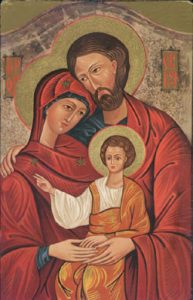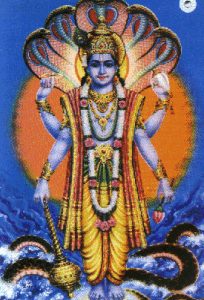theholyfamily

Christian religion has a characteristic that other religions have not emphasized in quite the same way, namely the role of the family, the family of mother and child, with a father at some distance. The central place in Catholicism of mother Mary and the baby Jesus, is striking. Throughout history we find this Christian icon as the symbol of life, and as an emblem of love as care.
The holy family: The father
The father is present too, but he is an ambiguous figure. On the one hand there is Joseph the carpenter, Mary’s partner in Nazareth and Bethlehem, who raises the young boy and is commonly viewed as Mary’s husband.
On the other hand, there is a ‘true’ father of Jesus as well. He is God, the one who has fertilized the Virgin Mary through the Holy Spirit. So Jesus is ‘really’ the child of the Virgin Mary and God. As a nine-year-old boy he already knows that the temple is the place where ‘his Father’ resides and that he has to go there to do ‘his Father’s work’.
The holy family: sexual meaning
The sexual meaning of this foundation of Christian ideology is clear. Children come from their mothers’ womb, but have been placed there by the mysterious origin of life (‘God’). The visible man who lives the life of a father, takes a secundary place. His significance is secondary. God, the creator is depicted as a more or less abstract male parent.
 The holy family: christianity
The holy family: christianity
Probably God was conceived as a male, because the creation of the world came at that time to be seen as a complicated technical achievement, a ‘creation’ or invention, a product of technical superior intelligence and aptitude. And that has always been the work of men. Thus we may consider Christianity to be a form of religion more in line with the evolution of humans during the past ten thousand years. Christianity celebrates the male as creator, as maker, as renewer, with Christ as a social critic, a progressive with a promise of a better world to come. Christianity gave birth to many forms of reformism, to critical thinking, political movements, even to atheism itself.
The holy family: other religions
This is the most important difference between the Christian (and to some extent Islamic) ideology and more ‘natural’ religions like Hinduism, which associate god with the female earth, the unchanging cycle of birth and death, as the great (pro)creative force. Such natural religions do not embed social progress and criticism in their faith, but are more fatalistic and accepting.
